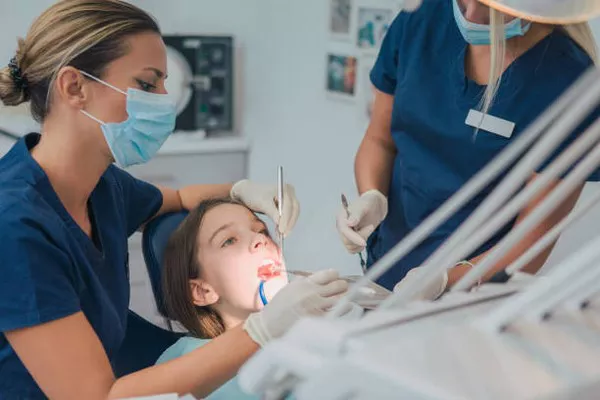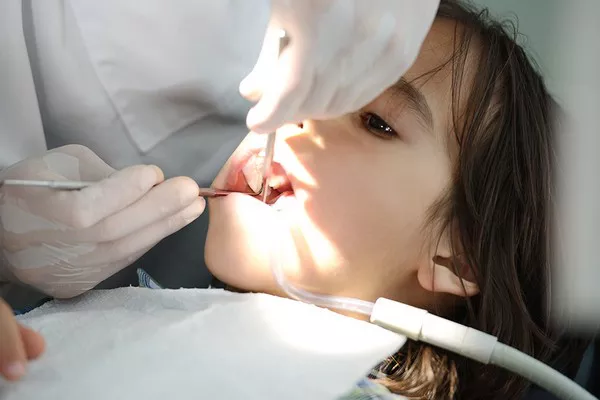Composite fillings, also known as tooth-colored or white fillings, are a popular dental restoration used to repair teeth affected by decay, cracks, fractures, or wear. These fillings are made of a mixture of plastic resin and fine glass particles, providing a natural appearance that blends seamlessly with the surrounding tooth structure. They offer several advantages over traditional silver amalgam fillings, including better aesthetics, improved bonding to the tooth, and the ability to preserve more of the natural tooth structure.
Immediate Aftercare
Following the placement of composite fillings, it’s essential to allow adequate time for the material to set and bond to the tooth surface. Dentists typically advise patients to wait at least an hour before eating or drinking to ensure the filling has fully hardened. This waiting period is crucial because consuming food too soon may disrupt the bonding process and compromise the integrity of the filling, leading to premature failure or leakage.
Food Recommendations
During the immediate post-filling period, it’s best to stick to soft, non-sticky, and non-crunchy foods that won’t exert excessive pressure on the newly restored tooth. Here’s a list of recommended foods:
- Soups: Opt for smooth and creamy soups like butternut squash or tomato bisque.
- Yogurt: Choose plain or flavored yogurt that doesn’t contain large chunks of fruit or nuts.
- Applesauce: Enjoy unsweetened applesauce for a soft and satisfying snack.
- Mashed Potatoes: Indulge in creamy mashed potatoes seasoned to your liking.
- Pasta: Cooked pasta dishes with smooth sauces, such as alfredo or marinara, are gentle on the teeth.
- Smoothies: Blend together fruits, yogurt, and milk or juice for a nutritious and easy-to-consume beverage.
- Eggs: Scrambled, poached, or soft-boiled eggs provide protein without requiring much chewing.
- Fish: Tender fish fillets, like salmon or tilapia, are gentle on the teeth and rich in omega-3 fatty acids.
Foods to Avoid
To protect the newly placed composite filling and prevent discomfort or damage, it’s advisable to avoid certain foods immediately after the procedure. Here are foods to steer clear of:
- Hard Candy: Crunching on hard candies can place undue stress on the filling and risk fracturing the tooth.
- Nuts: Avoid hard and crunchy nuts that may require vigorous chewing.
- Sticky Candy: Taffy, caramel, and other sticky candies can pull on the filling and dislodge it from the tooth.
- Chewy Foods: Sticky or chewy foods like chewing gum or dried fruits can adhere to the filling and disrupt its seal.
- Ice: Chewing on ice cubes can cause microfractures in the tooth and compromise the filling’s integrity.
- Hard Breads: Tough bread crusts or hard rolls may exert excessive pressure on the filling, leading to discomfort.
- Popcorn: Sharp hulls or kernels can become lodged between teeth and irritate the gums around the filling.
- Carbonated Beverages: Acidic and carbonated drinks can weaken tooth enamel and increase sensitivity around the filling.
Chewing Tips
While the anesthesia from the dental procedure may still be in effect, it’s essential to chew on the opposite side of the mouth from the newly filled tooth. This precaution helps prevent accidental biting or injury to the numbed area and allows time for the anesthesia to wear off naturally. Once sensation returns to the treated tooth, continue chewing on the opposite side to minimize pressure on the filling and promote healing.
Sensitivity Information
After receiving a composite filling, it’s common to experience temporary sensitivity to hot and cold temperatures. To minimize discomfort and promote healing, consider the following tips:
- Temperature Moderation: Opt for lukewarm or room-temperature foods and beverages to avoid triggering sensitivity.
- Avoid Extreme Temperatures: Steer clear of very hot or icy-cold foods and drinks, as they can exacerbate sensitivity and cause discomfort.
- Use a Straw: When consuming cold beverages, use a straw to bypass direct contact with the sensitive tooth and minimize discomfort.
Long-term Care
Maintaining the integrity of your composite filling and overall dental health requires consistent care and attention. Here are some tips for long-term maintenance:
- Practice Good Oral Hygiene: Brush your teeth twice daily with fluoride toothpaste and floss regularly to remove plaque buildup and prevent decay around the filling.
- Attend Regular Dental Check-ups: Schedule routine dental exams and cleanings to monitor the condition of your filling and address any emerging issues promptly.
- Avoid Teeth-Clamping Habits: Refrain from biting hard objects like pen caps, fingernails, or ice cubes, as this can place unnecessary stress on the filling and increase the risk of damage.
- Limit Sugary Foods and Drinks: Reduce your intake of sugary snacks and beverages to minimize the risk of tooth decay and maintain the longevity of your filling.
- Wear a Mouthguard: If you grind your teeth at night or participate in contact sports, wear a custom-fitted mouthguard to protect your teeth and fillings from damage.
Follow-up
If you experience prolonged discomfort, changes in bite alignment, or any other concerns after getting a composite filling, don’t hesitate to contact your dentist for further evaluation and treatment. Your dentist can assess the filling and address any issues to ensure your continued oral health and comfort.
Conclusion
Proper dietary choices and post-procedural care play a crucial role in the success and longevity of composite fillings. By following these guidelines and maintaining good oral hygiene habits, you can protect your investment in your dental health and enjoy a beautiful, functional smile for years to come.
FAQs About Composite Fillings
1. How long after a composite filling can I eat?
After receiving a composite filling, it’s essential to wait at least an hour before eating or drinking anything. This waiting period allows the filling material to fully harden and bond to the tooth surface. Consuming food too soon can disrupt the bonding process and compromise the integrity of the filling, leading to potential complications.
2. Can you eat anything with a composite filling?
While you can eat a variety of foods with a composite filling, it’s best to choose soft, non-sticky, and non-crunchy options immediately after the procedure. Foods such as soups, yogurt, mashed potatoes, and cooked pasta are gentle on the teeth and less likely to cause discomfort or damage to the filling. Avoid hard, sticky, or chewy foods that may exert excessive pressure on the filling and increase the risk of complications.
3. What to avoid during composite filling?
To protect the newly placed composite filling and promote healing, it’s advisable to avoid certain foods and habits immediately after the procedure. Foods to avoid include hard candies, nuts, sticky candy, chewy foods, ice, hard breads, popcorn, and carbonated beverages. Additionally, refrain from biting hard objects or clenching your teeth, as this can place unnecessary stress on the filling and compromise its integrity.
4. How long does it take for composite fillings to settle?
Composite fillings typically set and settle within a few hours after the dental procedure. However, it may take up to 24 hours for the filling material to fully harden and reach its maximum strength. During this time, it’s essential to avoid eating hard or sticky foods and to chew on the opposite side of the mouth from the filled tooth to prevent disruption of the bonding process. If you experience any prolonged discomfort or changes in bite alignment, contact your dentist for further evaluation and treatment.






























